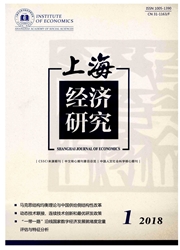

 中文摘要:
中文摘要:
如何在充分考虑产业关联性的同时兼顾产业增长的内生性,即产业的自生能力,这是当前这方面学术研究的一个盲点,该文将区域投入产出模型的结构分解技术应用于传统投入产出模型,以求解决这一问题。研究发现,中国经济发展进程中关联演进占据核心地位,由于当前中国经济增速正在“下台阶”,迫切要求我们对未来中国的产业结构演变状况进行动态分析,借鉴美日的经济转型中逐步提高经济增长内生性的经验,针对当前中国产业结构演进中内生增长效应和关联拉动效应不断下行的趋势,相应调整产业政策,对于第一产业,应更加注重发展其对于其他行业的溢出效应;对于第二产业,应加强对未来可能具有更加广泛的技术经济联系的行业的扶持;对于第三产业,应采取内生性和关联性并重的政策,同时注重产业生长机制和关联影响的建设。
 英文摘要:
英文摘要:
How to make the endogenous nature of industry development been taken into account in consid- ering the correlation effect between industries, which is a blind spot in the current academic research. To solve the problem, in this artiele the structural decomposition technique of regional input-output model is creatively applied to traditional input-output model. The study finds that correlated evolution occupies the core status in the development process of Chinese economy, but it is worth noting that at present Chinese economy is "down the steps", in the future, China will face an important stage of strategic transformation, which press for dynamic analysis of Chinese industrial structure evolution in the future, learn from the economic transformation experience of the United States and Japan, the importance of endogenous growth will gradually increase. But the effects of endogenous growth and correlated pull will go down in the process of Chinese future industrial structure evolution, the government' s policy of industrial structure should be more detailed and targeted. For the first in- dustry the industrial policy should emphasis on its spillover effect to other sectors, for the second industry, the in- dustrial policy should strengthen support on the sectors that may have more extensive technical and economic ties in the future, for the tertiary industry the industrial policy should emphasis on both the endogenous and correla- tion nature, meanwhile focusing on the construction of industrial growth mechanism and the correlated impact.
 同期刊论文项目
同期刊论文项目
 同项目期刊论文
同项目期刊论文
 期刊信息
期刊信息
